What is your source for the new Noctua AM4 heatsink?
Making something bigger like the Nexus or AXP is the plan.
Navigation
Install the app
How to install the app on iOS
Follow along with the video below to see how to install our site as a web app on your home screen.
Note: This feature may not be available in some browsers.
More options
You are using an out of date browser. It may not display this or other websites correctly.
You should upgrade or use an alternative browser.
You should upgrade or use an alternative browser.
DAN HSLP-48: A powerful sub 50mm heatsink
- Thread starter dondan
- Start date
AlbinoWolf
n00b
- Joined
- Feb 22, 2017
- Messages
- 39
Still doesnt guarantee that it ll be sub-48mm, so we ll see...
also "hopefully" is pretty vague.
also "hopefully" is pretty vague.
"Working on it" is as solid as possible for an answer. It might not be out soon but it exists.Still doesnt guarantee that it ll be sub-48mm, so we ll see...
also "hopefully" is pretty vague.
dondan
[H]ard|Gawd
- Joined
- Apr 15, 2013
- Messages
- 1,751
Looking pretty with direct touch heatpipes too  . Are the fin spacing bends necessary for the middle of the heatsink? And can the outer ones be placed on the outer edge in the unlikely event that we end up using a 120mm larger fan?
. Are the fin spacing bends necessary for the middle of the heatsink? And can the outer ones be placed on the outer edge in the unlikely event that we end up using a 120mm larger fan?
Just wondering as there might be a good manufacturing reason or design behind those.
Just wondering as there might be a good manufacturing reason or design behind those.
Ca11idus
Limp Gawd
- Joined
- Jan 9, 2012
- Messages
- 507
Is that the thermalright ty-100 fan?

DAN Cases is back with a new idea...
This time I try to develop the best CPU heatsink under 50mm. The aim is a heatsink that keeps the temperatures up to 15°C lower than existing competitors like the C7 or L9i. Furthermore I will focus on noise level, because current heatsinks that come close to the side panels in cases like A4-SFX or Sentry generate some disturbing noise because of air turbulence
Introduction:
The project name is HSLP-48 (HeatSinkLowProfile-48). The current design is based on Thermalrights AXP100 series but the HSLP-48 is wider and lower.
The idea is a heatsink with a sandwich layout. On the bottom there is the CPU plate with six heatpipes, after that a 100mm FAN (92mm mountpoints) with a thickness of 14mm and on top 47 fins with a thickness of 17mm. The total hight will be 48mm. The fins will be above the RAM and the I/O area (audio, USB s.o.) of the motherboard.
The fan will be mounted with four anti vibration rubbers. The rubbers allows you to mount the fan centered or you can shift it to the left or right side. You will be able to mount 92mm, 100mm or 120mm fans. You can mount a full size 120mm fan on top or a low profile 120mm fan (max. 15mm) under the heatsink. The distance from the fan to the side panels will be min. 17mm so it will not generate air turbulence.
I plan to cooperate with Thermalright on this project and I am also considering Noctua as an option. The big advantage of Thermalright is the TY-100 fan, the best rentention kits on the market for all sockets and existing products that are very similar to my heatsink that will lower tooling fees.
Specifications:
Socket Support: 1155. 1151, 1150, 1156, 2011 square and narrow Ilm, AM4
Total Dimensions: 48 (H) mm x 130 (W) mm x 137,5 (L) mm - including heatpipes
Fin Area Dimension: 18,5 (H) mm x 130 (W) mm x 110 (L) mm, 48 fins
Material: copper and aluminum
Heatpipes: 6x 6mm heatpipes
Fan: Thermalright TY-100 (custom color)
Total Surface: 103896mm² (I plan to reduce the spacing between fins this will end in a surface of 142269mm²)
Price Tag: 30-60€
Compatibility:
The heatsink should be as compatible as possible. You can use RAM with normal height, you will have full access to the PCIe port. You can access the SATA ports (in some cases you need angled connectors). The heatsink will work on boards with the socket close to the PCIe port and close to the topside. If the 100mm fan will not fit between the I/O area and RAM (ASUS ROG Maximus VIII Impact) you can use a default 92mm fan. If you have more space you can mount a 120mm on top. Currently there is only one board from the Z270 series that gives problems. I talk about the ASUS ROG Strix Z270I Gaming. The CPU phase heatsink is too high. Some users mention that the Nexus will fit. If this is true, the HSLP-48 will also fit. I will not make a heatsink that only fits in the A4-SFX. I think a heatsink will have a high MOQ so I need to sell more heatsink as we have A4-SFX currently on the market.
FAQ:
How much space is between FAN and bottom plate?
6,5mm
How much space is under the fan?
24mm
Is it possible to unscrew the heatsink without removing the motherboard?
Yes, because the heatsink is secured with two screws to Thermalrights special retention kit.
Why there is a small cut on each side of the fin surface?
You will need that gap for your screw driver to mount the heatsink.
Is a full copper version an option?
Yes if it will be inside my price range!
When will this heatsink reach the market?
Currently I don't have a manufacturer and a prototype. So the release can be in the next 6 month or never if the results of the prototype are bad.
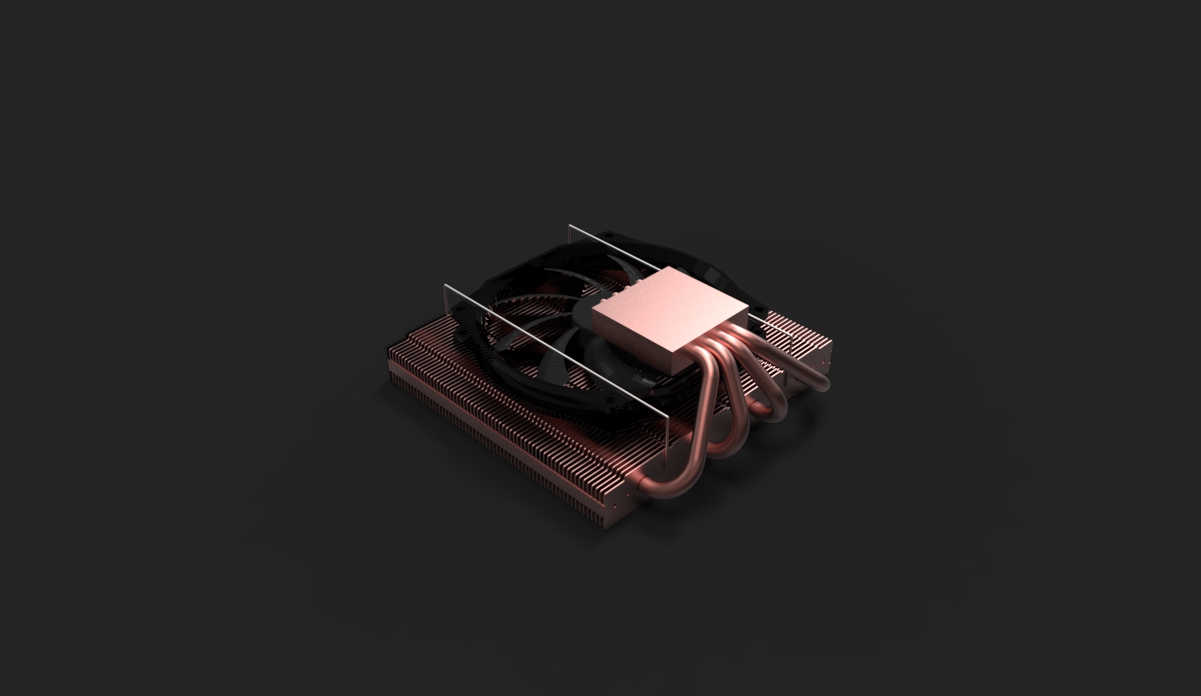
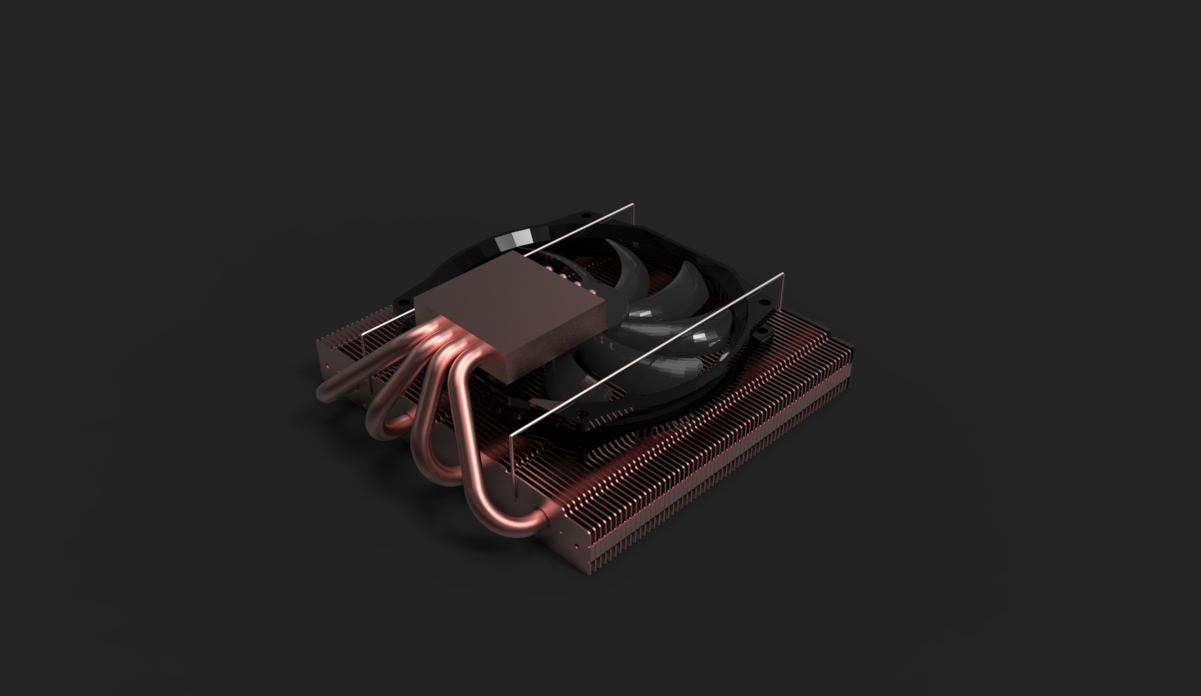

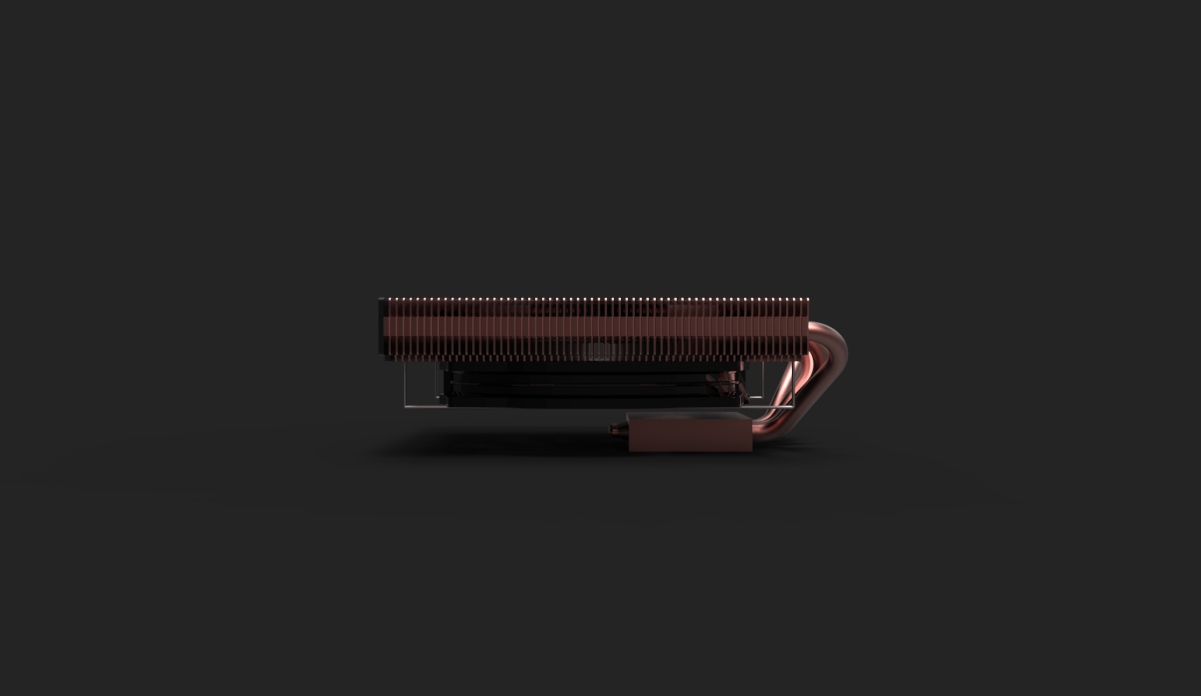
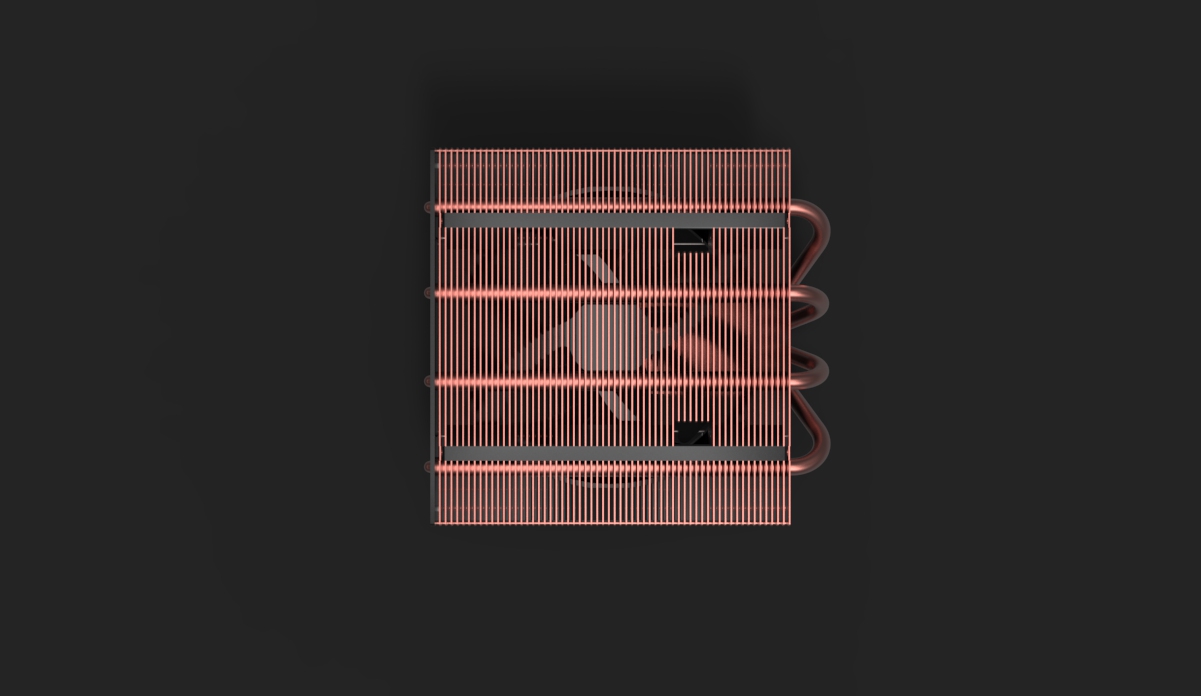
Thoughts:
What are the keyfeatures of a good heatsink?
1.) A good heat transfer between CPU plate and fins area
2.) A good heat transfer between CPU and CPU plate
3.) A big surface for a good heat exchange
To optimize my current design I will analyze it based on the three tesis:
A good heat transfer between CPU plate and fins area.
We have 6 x 6mm heatpipes I think this is enough
A good heat transfer between CPU and CPU plate.
Thermalright is able to produce direct touch heatpipes. I think this will be a great option for the HSLP-48. Furthermore this will lower the CPU plate from 10,5mm to 6,5mm. So I can add some mm to the thickness of the fins.
A Vapor-Chamber is not necessary because of the tiny surface of the CPU plate. Furthermore I have to pay patent license for it if I have it correct in my mind.
A big surface for a good heat exchange.
- The surface of the current design is:
normal fins = 17 (H)mm * 121 (L) mm * 42 count = 86394mm²
small fins = 17 (H)mm * 59 (L) mm * 5 count = 5015mm²
5% lost area for heatpipes hole
Total: 86838mm²
- What does the other compatitors have?
C7 = 27 (H)mm * 97 (L) mm * 57 count * 0.75 (25% lost for heatpipes) = 111962mm²
L9i = 21 (H)mm * 95 (L) mm * 56 count * 0.85 (15% lost for heatpipes) = 94962mm²
So you see currently the HSLP-48 will have the smalles surface. To address that problem I will increase the hight to 18,5mm and the length to 130mm. Furthermore I will reduce the fin spacing from 1.88mm to 1.2 mm like the C7. This will increase the surface.
- Here is the new surface calculation:
normal fins = 18.5 (H)mm * 130 (L) mm * 60 count = 86394mm²
small fins = 18.5 (H)mm * 59 (L) mm * 5 count = 5015mm²
5% lost area for heatpipes hole
Total: 142269mm²
These changes will increase the surface extremely (64% more surface). But I have to talk with Thermalright about the topic why the choose a fin spacing of 1.88mm
Hi Dan,
I've detected some posibble flaws in the design and I have some suggestions to make the HSLP-48 perfectly adapted to A4-SFX and more efficient:
In this type of heatsinks the fan is used to be placed on top of the heatsink, covering the whole top of it, ensuring the air pressure to pass throught the fins.
In this design there is a smaller than the sink fan below of it, so a big part of the air will go up, crash on the cover and return to the case through the open sides.
If it isn't possible to use a bigger fan that covers all the fins and also covering the sides with an end plate (like the falcon but inversed),
it is needed to force all the air out of the case. So I propose to cover and seal all the gaps to make a high pressure chamber or wind tunnel, to force the air out of the case (something like the gpu or notebook heatsinks)
Here you have the changes in the bottom side:
https://preview.************/kJVHiv/key_nexus_1200ailp0.jpg
On top of it, its needed a perimetral rubber to seal the high-pressure chamber and force the air out, and it can reduce noise vibration also, if it gets in contact with the case.
(a perimetral copper plate may be required to sit it, maybe the end of the fins can be bent):
https://preview.************/ny2V3v/key2_104qvkpl.jpg
All of the parts can be made out of plastic, aluminum, or the same copper which may be cool (if you want to maintain the fancy look)
The principle is the same as this video
Hope to help a little.
Last edited:
Julio Espinosa
Weaksauce
- Joined
- Feb 1, 2017
- Messages
- 71
Dondan: I was thinking!
What if.... You make an AIO so thin, but large that could use all the side panel!
In fact, you could make the radiator BE the side panel! (like this Corsair PC)
And you could sell it like an accessory that I would obviously buy.
What if.... You make an AIO so thin, but large that could use all the side panel!
In fact, you could make the radiator BE the side panel! (like this Corsair PC)
And you could sell it like an accessory that I would obviously buy.
There would be no way to mount it to the sidepanel, but I like the idea.Dondan: I was thinking!
What if.... You make an AIO so thin, but large that could use all the side panel!
In fact, you could make the radiator BE the side panel! (like this Corsair PC)
And you could sell it like an accessory that I would obviously buy.
dondan
[H]ard|Gawd
- Joined
- Apr 15, 2013
- Messages
- 1,751
Here is a preview for the socket rentention kits. Keep in mind that the screw driver hole on the top surface is missing.


Its looking like a real heatsink now!
Intrigued about the installation order for the heatsink. Seems similar to the noctua type with two metal bars that are fixed to the motherboard, and then two screws are used to connect the heatsink onto the mounting bars. Will there be holes in the fins to allow access to the two screws? Or maybe theres more to the design
Intrigued about the installation order for the heatsink. Seems similar to the noctua type with two metal bars that are fixed to the motherboard, and then two screws are used to connect the heatsink onto the mounting bars. Will there be holes in the fins to allow access to the two screws? Or maybe theres more to the design
What about coating on copper? If price allow it, of course.
Like this on Enermax T50 Axe:
Like this on Enermax T50 Axe:
I think is graphene, but maybe is something else.Gen. 2 TCC (Thermal Conductive Coating) creates better velocity of thermal transferring and prevents oxidation
Last edited:
What about coating on copper? If price allow it, of course.
Like this on Enermax T50 Axe:
I think is graphene, but maybe is something else.
Dondan has already been complaining about how the price of the heatsink is too high as it is so I highly doubt that the coating will make it any cheaper...
You should avoid aluminum in the base, as it corrodes in contact with liquid metal pastes. The base should be fully copper
dondan
[H]ard|Gawd
- Joined
- Apr 15, 2013
- Messages
- 1,751
So the work on my heatsink from my side is nearly done. I don't have any specification on AM4 socket. I think I have to contact AMD for more details.
Here is a preview on 2011-3 Narrow ILM
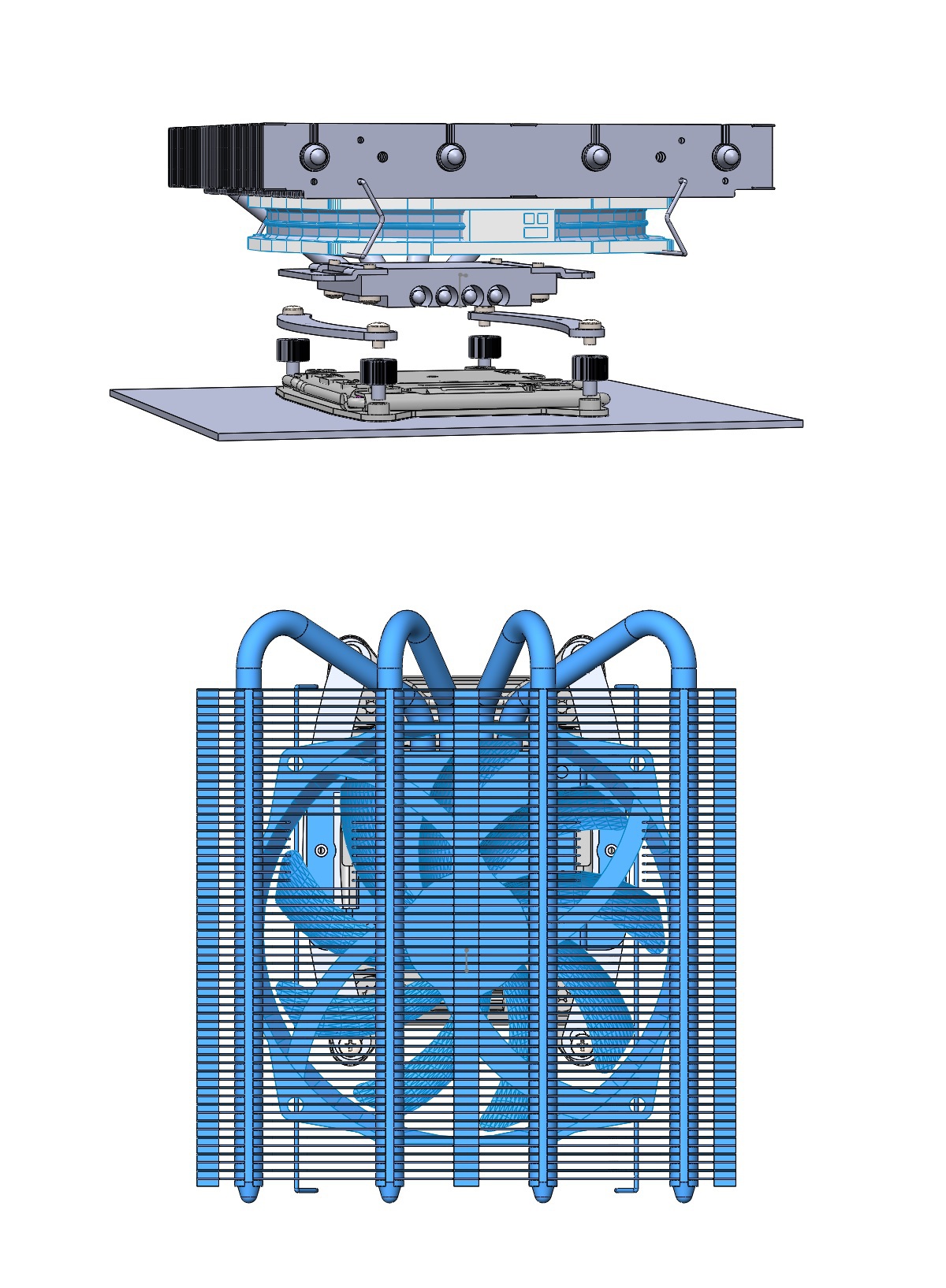
Here is a preview on 2011-3 Narrow ILM

Jonas Mellkvist
Limp Gawd
- Joined
- Dec 18, 2016
- Messages
- 159
So the work on my heatsink from my side is nearly done. I don't have any specification on AM4 socket. I think I have to contact AMD for more details.
Here is a preview on 2011-3 Narrow ILM

Nice to see it´s done from your side.
Got any prices from CoolJag ??
Thought about the demands from Thermalright about atleast 2000 Coolers to get the price you want.
So you drop it because it wasnt possible to proceed
dondan
[H]ard|Gawd
- Joined
- Apr 15, 2013
- Messages
- 1,751
I never got a new price from Thermalright. The last message from them (the German middleman) was 10 days ago. I am still waiting but I think it will be impossible working on a project like this with them with such a delay in communication.
From CoolJag I get 1-2 mails every day. I can feel that they are interested in this project. I think I will get a price this week.
Edit:
This evening I send an e-mail to the German middleman company that forwards my messages to Thermalright, that I am not longer interested in acooperation with them, because a project like this can't work without communication.
From CoolJag I get 1-2 mails every day. I can feel that they are interested in this project. I think I will get a price this week.
Edit:
This evening I send an e-mail to the German middleman company that forwards my messages to Thermalright, that I am not longer interested in acooperation with them, because a project like this can't work without communication.
Last edited:
Blackreplica
Limp Gawd
- Joined
- May 9, 2016
- Messages
- 205
I never got a new price from Thermalright. The last message from them (the German middleman) was 10 days ago. I am still waiting but I think it will be impossible working on a project like this with them with such a delay in communication.
From CoolJag I get 1-2 mails every day. I can feel that they are interested in this project. I think I will get a price this week.
Edit:
This evening I send an e-mail to the German middleman company that forwards my messages to Thermalright, that I am not longer interested in acooperation with them, because a project like this can't work without communication.
I think from an ethical perspective, you absolutely did the right thing. Being in your shoes I would also unquestionably go with Cooljag.
kingtron
Limp Gawd
- Joined
- Feb 2, 2017
- Messages
- 254
dondan does the final design includes the ability to attach 120x120x12mm fan like the scythe SY1212SL12H-P (the 4-pin PWM version that comes with the BIG Shuriken 2) ? because they sell it alone if someone email them.
it will prevent the removal of the large Northbridge and Mosfets big heat-sinks in some motherboards.
By the way VLP Ram is a must with 120mm fans. (12mm or 15mm)
it will prevent the removal of the large Northbridge and Mosfets big heat-sinks in some motherboards.
By the way VLP Ram is a must with 120mm fans. (12mm or 15mm)
Last edited:
dondan
[H]ard|Gawd
- Joined
- Apr 15, 2013
- Messages
- 1,751
It is nearly a Nexus. The fins on the Nexus have a height of 16,5mm and on the HSLP- 48 18,5mm. Free space is 19mm but I think a 20mm fan will fit if you bend the heatsink a little, but I don't think you will find a low profile ram that fit under it.
kingtron
Limp Gawd
- Joined
- Feb 2, 2017
- Messages
- 254
So there will be all kind of clips and clip holes for all fan sizes 92mm and 120mm (12-15mm thikness) , and the ability to shift the fan a littile in all directions.It is nearly a Nexus
Last edited:
dondan
[H]ard|Gawd
- Joined
- Apr 15, 2013
- Messages
- 1,751
There are clip holes to support 92-120mm fans with a thickness of 12-16mm. And yes you will be able to shift the fan. For some boards it will be possible to use a 120mm without the need of lp ram.
Jonas Mellkvist
Limp Gawd
- Joined
- Dec 18, 2016
- Messages
- 159
There are clip holes to support 92-120mm fans with a thickness of 12-16mm. And yes you will be able to shift the fan. For some boards it will be possible to use a 120mm without the need of lp ram.
Nice to hear.
Do you think its far away with the Kickstarter ??
dondan
[H]ard|Gawd
- Joined
- Apr 15, 2013
- Messages
- 1,751
At first I need prices. If the prices will be ok I will order a prototype. I think this can take 1-3 month. Then I will test it with a Ryzen 1700X, 7700K and 5820K and share all results with you. If the results are in the expected range then I will take photos, make a user manual, update my website and design the Kickstarter campaign.
So we have three requirements that can make this project fail: price, profit and temp results.
For the business benefit point of view I will have a very bad hourly wage on it. So if I can earn $10 (before duty) on each heatsink on an aimed Kickstarter price of under $70 I will do it. So it will be more a present to the community and A4-SFX owners as a big business deal.
I aiming a campaign in Q4 2017 - Q1-2018.
So we have three requirements that can make this project fail: price, profit and temp results.
For the business benefit point of view I will have a very bad hourly wage on it. So if I can earn $10 (before duty) on each heatsink on an aimed Kickstarter price of under $70 I will do it. So it will be more a present to the community and A4-SFX owners as a big business deal.
I aiming a campaign in Q4 2017 - Q1-2018.
Last edited:
Julio Espinosa
Weaksauce
- Joined
- Feb 1, 2017
- Messages
- 71
Have you think about the guys at Calyos to make the cooler? (at kickstarter too)
With their tecnology and a fan, maybe it could be possible (and maybe smaller)
With their tecnology and a fan, maybe it could be possible (and maybe smaller)
Their fanless solutions work with large and heavy heatsinks, the size of the case. They have no small and light solutions and they rely on building their own cases so non of the technologies they currently have are efficient with cases built for aircooling. That is why you can see that most of their solutions involved their own custom built case and they are pretty heavy which defeats the purpose of a small portable case.Have you think about the guys at Calyos to make the cooler? (at kickstarter too)
With their tecnology and a fan, maybe it could be possible (and maybe smaller)
Julio Espinosa
Weaksauce
- Joined
- Feb 1, 2017
- Messages
- 71
They develop Loop Heat Pipe Cooling Solutions without fans.
If Dondan adds a fan, he could make a small system.
If Dondan adds a fan, he could make a small system.
The way I understood it, is that the "loop heat pipe" is only more efficient over long distances. For short distances the normal capillary pipes outperform loop pipes. In the HSLP-48 there is no need for long distance pipes.They develop Loop Heat Pipe Cooling Solutions without fans.
If Dondan adds a fan, he could make a small system.
www.thermacore.com
For simple, lightweight and flexible heat removal — in long-distance heat transfer applications where conventional heat pipes aren’t feasible
Last edited:
Calyos may also produce stand-alone loop heat pipe coolersHave you think about the guys at Calyos to make the cooler? (at kickstarter too)
With their tecnology and a fan, maybe it could be possible (and maybe smaller)
CLHP-RW-100F1120-017 and CLHP-RW-30F1120-015
Last edited:
dondan
[H]ard|Gawd
- Joined
- Apr 15, 2013
- Messages
- 1,751
I am not interested in the Calyos solution and I think they have currently enough todo with their Kickstarter campaign.
Last edited:
dondan
[H]ard|Gawd
- Joined
- Apr 15, 2013
- Messages
- 1,751
Some new shots:

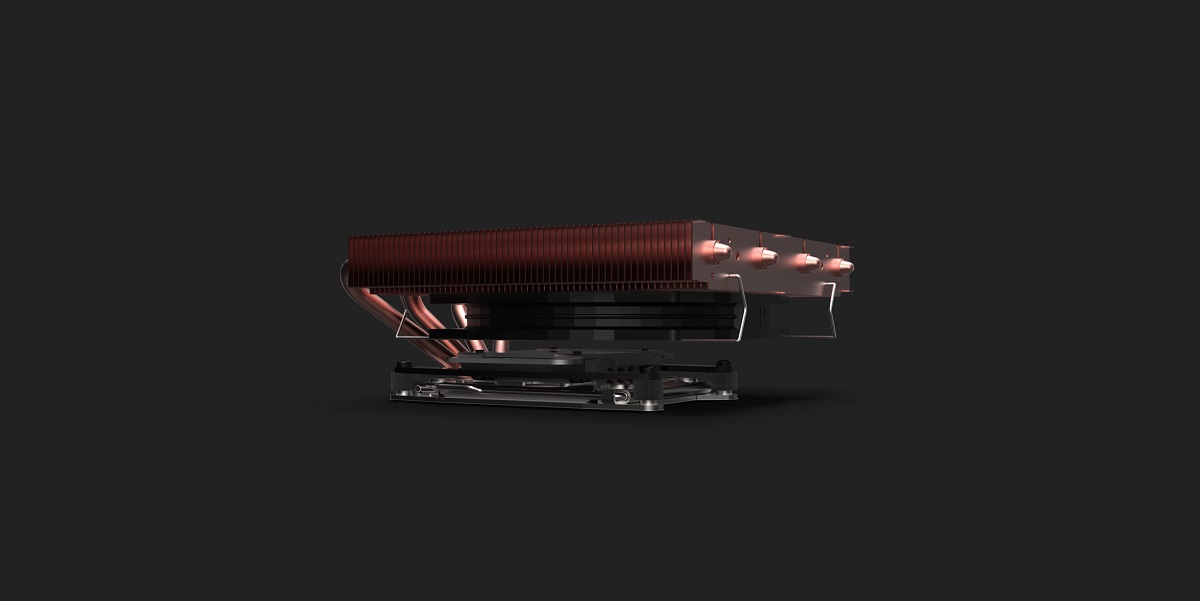






XstreamHard
n00b
- Joined
- Jan 21, 2017
- Messages
- 60
You should consider making the mounting kit and the CPU contact plate as aerodynamic and thin as possible so the airflow to the fan is maximized.
dondan
[H]ard|Gawd
- Joined
- Apr 15, 2013
- Messages
- 1,751
If you have a idea how to make it more aerodynamic please let me know.
dondan
[H]ard|Gawd
- Joined
- Apr 15, 2013
- Messages
- 1,751
If somebody of you have already a AM4 socket board please help me, because I need two dimension:
- Height from motherboard pcb to topside of CPU
- hole pattern of the backplate (M3 or M4)?
The CLHP-RW-30F1120-015 could work in this case, too bad it has to be tilted like that...
![[H]ard|Forum](/styles/hardforum/xenforo/logo_dark.png)
